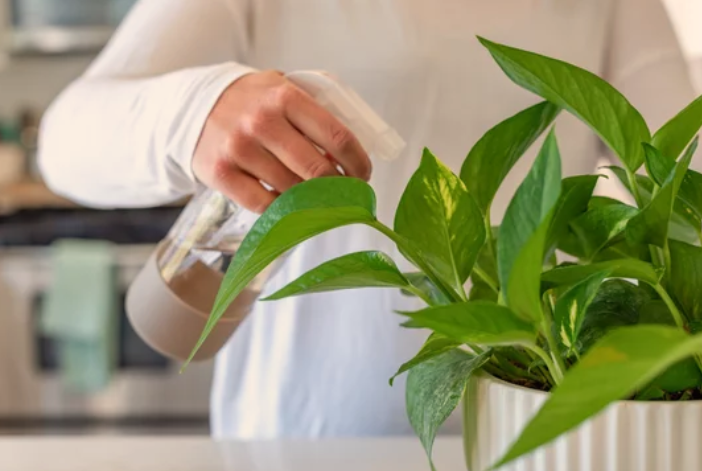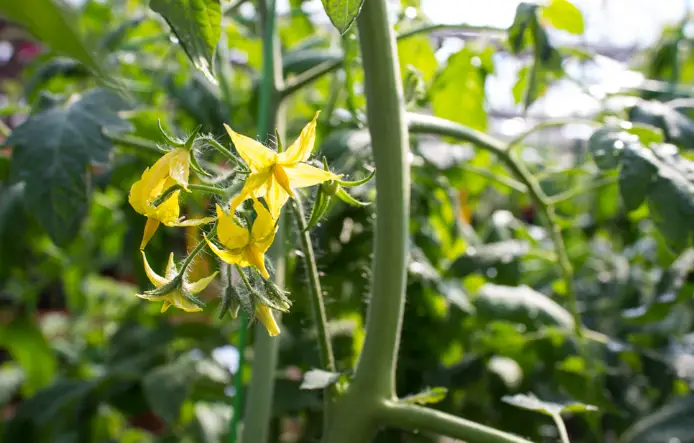Lemon Balm Water Requirements: A Comprehensive Guide
Lemon balm is an herb that is native to Europe and is now grown all over the world. It is a perennial plant that belongs to the mint family and has a strong lemon scent. It is used in cooking, teas, and as a natural remedy for various ailments. To grow healthy lemon balm plants, it is important to understand their water requirements.
Lemon balm plants require regular watering to thrive, especially during the hot summer months. They prefer moist soil, but it is important not to overwater them as they can be susceptible to root rot. When watering lemon balm, it is best to water deeply and less frequently rather than shallowly and frequently. This allows the water to penetrate deeper into the soil and encourages the plant’s roots to grow deeper as well.
It is also important to note that lemon balm plants grown in containers require more frequent watering than those grown on the ground. This is because the soil in containers tends to dry out faster than the soil in the ground. When watering lemon balm in containers, it is important to water until the water runs out of the drainage holes at the bottom of the container. This ensures that the soil is evenly moist and prevents water from accumulating at the bottom of the container.
Basics of Lemon Balm Water Requirements

Lemon balm requires well-drained soil that is kept consistently moist but not waterlogged. Overwatering can lead to root rot, so it is important to strike a balance between keeping the soil moist and not overwatering.
The amount of water required by lemon balm depends on several factors, including the temperature, humidity, and soil type. In general, lemon balm requires more water during hot, dry weather and less water during cool, damp weather.
To determine if your lemon balm plant needs water, check the soil moisture level by sticking your finger about an inch into the soil. If the soil feels dry at this depth, it is time to water your plant. If the soil feels moist, wait a day or two before checking again.
When watering your lemon balm plant, water deeply enough to saturate the soil to a depth of at least six inches. Allow the soil to dry out slightly between waterings, but do not allow it to become completely dry.
It is important to note that lemon balm is sensitive to the quality of the water it receives. The ideal water for lemon balm is neutral to slightly acidic, with a pH level between 6.7 and 7.3. If your water is too alkaline, you may need to adjust the pH level by adding sulfur or other acidic amendments to the soil.
Ideal Watering Conditions for Lemon Balm

Lemon balm is a hardy herb that can tolerate some drought, but it prefers consistently moist soil. Overwatering can lead to root rot, so it’s important to find the right balance. In this section, we will discuss the ideal watering conditions for lemon balm.
Soil Type
Lemon balm can grow in many types of soil, including clay soil, but it prefers well-drained loamy soil. The plant will also grow much faster and healthier if the soil is rich in organic matter. So, avoid using any soil that was used before to grow other plants. The pH of the soil should be between 5 and 7. If the soil is too acidic or too alkaline, the plant will not be able to absorb nutrients properly.
Climate
Lemon balm prefers a temperate climate with moderate rainfall. It can tolerate some drought, but it will not grow well in areas with long periods of dry weather. If you live in a dry climate, it’s important to water your lemon balm regularly to keep the soil moist. In areas with high humidity, be careful not to overwater, as this can lead to fungal diseases.
Seasonal Variations
In the spring and summer, lemon balm requires more water than in the fall and winter. During the growing season, water the plant when the top inch of soil feels dry to the touch. Water deeply, so the roots have access to water deep in the soil. In the fall and winter, reduce watering to once a week or when the soil feels dry to the touch.
To summarize, lemon balm prefers consistently moist, well-drained soil with a pH between 5 and 7. It requires more water during the growing season and less water in the fall and winter. By following these guidelines, you can keep your lemon balm healthy and thriving.
Effects of Overwatering and Underwatering
Lemon balm plants require adequate water to thrive, but overwatering or underwatering can cause problems. Here are the effects of both:
Symptoms of Overwatering
Overwatering can lead to root rot, which is a fungal disease that affects the roots of plants. It occurs when the soil is too wet for too long and the roots cannot get enough oxygen. Root rot can cause the roots to turn brown or black, become slimy, and emit a foul odor. In severe cases, the plant may wilt or die.
Other symptoms of overwatering include yellowing leaves, stunted growth, and a weakened immune system, which can make the plant more susceptible to pests and diseases.
Symptoms of Underwatering
Underwatering can cause the leaves of the lemon balm plant to wilt, turn yellow, or brown. The plant may also drop its leaves prematurely, and the stems may become brittle and break easily. In severe cases, the plant may die.
When a lemon balm plant is underwater, it conserves water by closing its stomata, which are tiny pores on the leaves that allow for gas exchange. When the stomata are closed, the plant cannot take in carbon dioxide or release oxygen, which can slow down photosynthesis and stunt the plant’s growth.
To prevent overwatering or underwatering, it is important to water the lemon balm plant only when the top inch of soil is dry to the touch. The amount of water the plant needs may vary depending on factors such as temperature and soil type. Providing enough drainage in the pot or ground where the plant is planted will help prevent root rot caused by excess moisture.
Mitigation Strategies for Improper Watering
Improper watering can lead to poor growth and yield in lemon balm. Here are some strategies to mitigate the effects of improper watering:.
Correcting Overwatering
Overwatering can lead to root rot and other diseases. If the soil is waterlogged, the roots will not be able to get enough oxygen, and the plant will suffer. Here are some strategies to correct overwatering:
- Reduce the frequency of watering: If the soil is still wet, wait before watering again. Lemon balm prefers moist but well-drained soil, so it is important to let the soil dry out a bit before watering again.
- Improve drainage: If the soil is not draining well, consider adding organic matter such as compost or vermiculite to improve drainage. Alternatively, you can transplant the lemon balm to a pot with better drainage.
- Provide better aeration: If the soil is compacted, it can restrict the flow of air to the roots. Loosen the soil around the plant to improve aeration.
Addressing Underwatering
Underwatering can lead to stunted growth and reduced yield. Lemon balm prefers moist soil, so it is important to water it regularly. Here are some strategies to address underwatering:
- Increase the frequency of watering. If the soil is dry, water the lemon balm immediately. Water until the soil is moist but not waterlogged.
- Mulch the soil: Mulching can help retain moisture in the soil. Apply a layer of organic matter, such as straw or wood chips, around the base of the plant to help retain moisture.
- Use a drip irrigation system. Drip irrigation can help deliver water directly to the roots of the plant. This can help reduce water loss due to evaporation and ensure that the plant gets enough water.
In summary, proper watering is essential for the growth and yield of lemon balm. Overwatering and underwatering can both have negative impacts on the plant. By following these strategies, you can mitigate the effects of improper watering and ensure that your lemon balm thrives.
Long-Term Care and Maintenance
Regular Monitoring
Lemon balm requires moderate watering, and it is important to monitor the soil moisture level to prevent over- or under-watering. The frequency of watering depends on several factors, such as the soil type, container size, and weather conditions. A general rule of thumb is to water the plant when the top inch of soil feels dry to the touch.
Adjusting Watering Schedule
During the summer months, lemon balm may require more frequent watering due to the higher temperatures and increased evaporation. Conversely, during the winter months, the plant may require less frequent watering due to the lower temperatures and reduced evaporation. It is important to adjust the watering schedule accordingly to prevent over- or under-watering.
Additionally, it is important to avoid waterlogging the soil, as it can lead to root rot and other fungal diseases. To prevent waterlogging, ensure that the pot has adequate drainage holes to allow excess water to drain out.
In summary, regular monitoring of the soil moisture level and adjusting the watering schedule accordingly is crucial for the long-term care and maintenance of lemon balm. By following these guidelines, one can ensure that the plant receives an adequate amount of water to thrive.
Frequently Asked Questions
What are the ideal growing conditions for lemon balm?
Lemon balm is a hardy perennial herb that grows best in cool weather. It prefers well-drained soil with a pH between 6.0 and 7.5. Lemon balm can tolerate partial shade, but it grows best in full sun.
How much water does lemon balm need?
Lemon balm is a hardy plant that does not require a lot of water. It needs to be watered regularly, but not too frequently. Overwatering can cause root rot, which can kill the plant.
What is the recommended watering schedule for lemon balm?
It is recommended to water lemon balm deeply once a week. The soil should be moist, but not wet. If the soil feels dry to the touch, it is time to water the plant.
Can lemon balm tolerate drought?
Lemon balm is a hardy plant that can tolerate drought. However, it is important to keep the soil moist to prevent the plant from becoming stressed.
What are the sun requirements for lemon balm?
Lemon balm can tolerate partial shade, but it grows best in full sun. It is important to provide the plant with at least 6 hours of sunlight per day.
What are the soil requirements for lemon balm growth?
Lemon balm prefers well-drained soil with a pH between 6.0 and 7.5. It can grow in a variety of soils, but it does best in loamy soil that is rich in organic matter.








